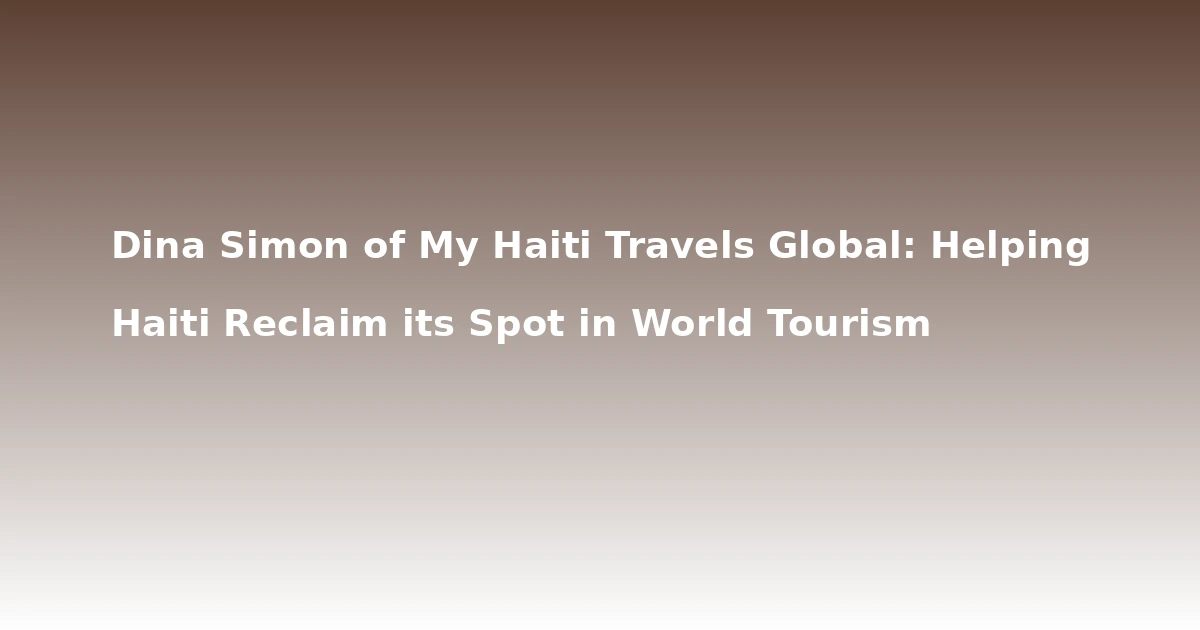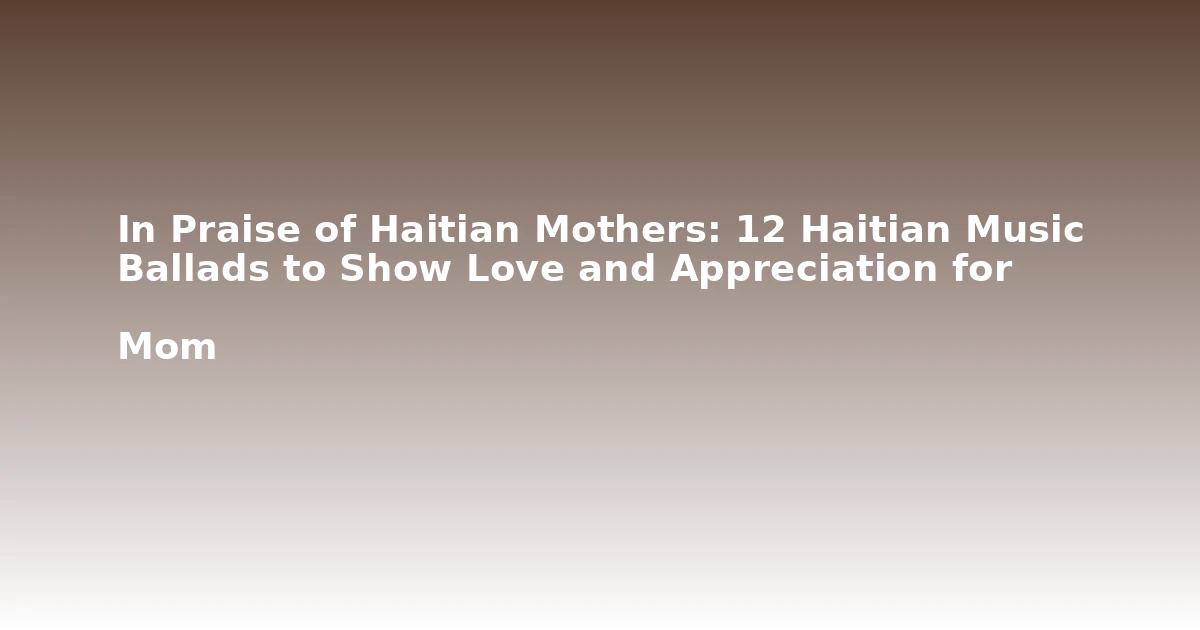If you’re a pop music aficionado, the names of and songwriter-producers that have made an impact in that arena, can probably roll of your tongue quite easily: Lamont and Dozier, Babyface, Rodney Jerkins, David Foster, Nile Rodgers, Quincy Jones, Michael Narada, Jazzy Phe, Timberland. Next time, add Ralph Boncy to this roll call. He’s accomplished what these songwriters and producers accomplished in the U.S.
music industry—in the Haitian music industry. Ask him to name all the artists that he’s worked with, and Boncy comes up with a list that sounds like entries in a musical encyclopedia: Lakansyèl, Carole Desmesmin, James Germain, Jacques Fatier, Gina Dupervil, Claudy Bernard, Claude Marcelin, Caribbean Sextet and Reginald Policard, Kajou, Beethova Obas, Bernard Lavilliers, Alan Cave, Raoul Denis, Tabou Combo, Zshéa, Djous, Edy Brisseaux, Jean Caze, Master Dji, Zeklè, Wesli, Eval Manigat, Gina Dupervil, and Jephté Bastien. Boncy says that with Bastien—they worked on a song together, but it was never recorded.
Boncy says that from 1998 to 2003, he worked as the musical director for Musique Plus and Musimax, sister stations in Canada. He also produced and hosted a two-hour weekly show called “Rythmes du Monde” (World Rhythms), which featured interviews with world music artists, passing through Montreal.
From there, he went on to be the music director for Couleur Jazz Radio, a world music and jazz station.
He’s also a French language book entitled Les Grandes Dames de la Musique Haitienne (Great Divas of Haitian Music). Nowadays, the music industry veteran is sporting multiple fedoras. He is currently working as a co-host, a radio programmer, a journalist, and reviewer for Espace Musique 100.7 FM and Radio Canada.
In this two-part interview, Boncy spoke about his work, his legacy, and taught us lots and lots about Haitian music, not to mention drop new names of artists and bands whose work we ought to explore.
What is your earliest music-related childhood memory?
My earliest childhood memories all come from the five LPs [the recording format that preceded the cassette tape and CD] my family owned. We had a turntable at my grandparents house where I was born and raised in Port-au-Prince, on Chemin des Dalles. One of them has a Harry Belafonte’s interpretation of “Latibonit”.
On the cover, he was carrying a wounded boy. I figured “sole” had died. It was very dramatic for me as a child.
Another one was the Fifth of Beethoven. We would put it on loud, my older brother Jacques and I, and make believe we were the conductor and the pianist. We also had one Henri Salvador, then one Webert Sicot and one Nemours Jean-Baptiste, to make it fair.
How did you get interested in songwriting and producing?
Working with a great friend, Dominique Sylvain. We would do writing sessions every Mondays. She was Amos Coulanges’ student.
I was self-taught. I became her producer when she was offered a record deal in France.
Can you tell us a bit more about Dominique Sylvain…Is Dominique Sylvain Haitian?
Dominique Sylvain is Haitian indeed. Pursued her career in France under the name of Joyshanti. There’s even a video of her in a Bollywood movie. She sang at the Olympia in Paris in 1996 and her theme songs were “Pa Kriyé”—her very own—and “Papa Damballah” that she took from Toto Bissainthe’s repertoire.
Did you ever get any whippings from your folks, related to the fact that you were working in the music business?
Never! My dad would sit down and listen to the stuff I loved and help me with translating lyrics from English. But he didn’t live to see me write popular music.
Who taught you to write songs?
Jacques Brel! My mother had a French correspondent who sent her six audio cassettes of all his masterpieces in the late sixties. I also took personal lessons from other great French writers: Charles Aznavour, Gilbert Bécaud, Michel Fugain, Pierre Delanoë, and mainly Claude Nougaro—to name a few…
Ralph Boncy strumming in a photo from the early phase of his career.
How did you get your first opportunity in the music business?
It came from Claude Marcelin. I was writing stuff with Mushy and Joel Widmaier—lots of drafts and mostly jingles actually—and he noticed my work. As he was finishing his album Boul Malachong for the Makaya label, he offered me to write saying he wanted a different statement about the youth in Haiti, aside from the usual konpa trend. “Sa Nou Vle” [What We Want] was not a hit, per say…But it didn’t go unnoticed.
It was my first song on a record in November ’81. I also consider in the first Zeklè song. Thank you Ti Claude!
There are many famous musicians who can’t play an instrument, yet still manage to compose music. What advice do you have for those who want to not only write but compose melodies as well, but who may not be trained musicians? Can you compose music if you don’t play an instrument?
Sometimes, you can. Some strong pop composers manage to make a melody stand on his own, and this is actually a good asset. But most of the time, you are better of understanding the harmony and the chord progressions you wan to go for. Like me…I will never be a good musician on a stage, but I know just enough to use a guitar and build a intro, a verse, a chorus, a bridge and a coda.
Above: Some album covers that feature songs that have been written and/or produced by Ralph Boncy.
Do you think there are certain elements that can make a song a hit?
Nobody knows. Great lyrics? A great hook?
Poetry? We keep trying to unfold that everlasting mystery. Like “Royals” by Lorde, a 16 years old beginner from New Zealand.
What made it a hit in 2013 Everything about it, I guess! My own first hit was “Reponn Mwen”. I wrote the lyrics in 20 minutes.
It’s like Sting. He woke up in the middle of the night and put down most of “Every breath you take” that was bugging his sleep and then when back to bed.
What comes first…lyrics or melody?
It’s never the same. I like it better when the first sentence comes out with its own melody. That is the first strike. Then you can dig and build around it.
You’ve collaborated with many an artist. What goes into a musical collaboration?
Has to come naturally. It needs to click.
So, you actually worked with Wyclef?
I met Wyclef in Bordeaux, France, in 1996. Raoul Peck was the Minister of Culture in Haiti and wanted me to approach him on the tour so he could come in Haiti with The Fugees. We hung out after the show and I got to witness the making of The Carnival through several sessions.
I was totally amazed. Lauryn Hill was there too. We got along well.
Have you ever thought of starting a record label, since you have all this past experience in the music business?
I started three record labels, back in the 80’s. One to released Zeklè and Lakansyèl’s recordings with Joel, Mushy, and Raoul “Ti Raoul” Denis and two with the same guys and Robert Denis, spreading to Carole Demesmin, Assad Francoeur and the late Jean-Michel Daudier.
You furnished me a whole list of singers from Haiti’s past and present that you’ve worked with. Would you mind discussing some of them? You worked with a band called Tabou Combo. How did you connect with them?
I’ve been a Tabou fan since I was a kid. But the only time I actually worked with them in the studio was on the album Go Tabou Go. Yvon “Kapi” Andre wrote the song “Fête de la Musique” and wanted to transform it into a duet with Emeline [Michel].
You indicated that at one point you managed Emeline Michel.
I managed and produced Emeline from 1986 to 1994. We were also married four years. There’s a little bit of my work on the album “Banm Pase” that she produced on her own in 1995 between Montreal and New-York. Then we collaborated again in 2013 for one song on her latest achievement Quintessence.
[All photos provided by the subject, except LP Image; Credit: ]
This concludes Part 1 of the interview with Ralph Boncy, Haitian music veteran! Be sure to watch for Part 2.
Last Updated on December 4, 2025 by kreyolicious



